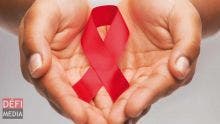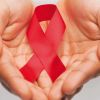
Previous maritime incidents
Cemrem: August 2009 The Panamanian cargo ship making its way from Taiwan got stuck in Port Louis for six months, following a dispute between its owners and business partners. After a month, the ship started taking on water, triggering fears of an ecological disaster as the ship was carrying around 320 tons of fuel. It was also carrying 15,000 tons of cargo.
Publicité
MV Angel 1: August 2011 The Panamanian ship ran aground on the reefs at Poudre d’Or, at 2.7 nautical miles from the coast. It was carrying 32,000 tons of rice to Ivory Coast. The ship remained grounded for three months. Its engines stalled and the ship drifted until it ran aground.
of Ocean Economy.
Response protocol
The reliability of our sea surveillance system and the disaster management response protocol have been subject to severe criticism shortly after the ship ran aground. The Port Master captain Benoit Barbeau explains that the authorities have a response system to deal with disasters and potential issues arising at sea.“We can undertake any kind of sea-based operation. We can locate ships and we can also gather the necessary equipment quickly. Yes, we can look for other means to locate ships but we do manage with what we have. But currently, we can respond to an emergency if need be.” However, a question remains unanswered: Why did the NCG not launch operations immediately after receiving the distress call from MV Benita? Other sources at the National Coast Guard told us that the bad weather and the late hour might be probable reasons why the NCG only launched operations six hours later. Regarding reliability of our system and disaster management, captain Barbeau highlights that specific protocols are already in place such as the National Oil Spill Plan and the National Disaster Committee by the Ministry of Environment, Sustainable Development, and Disaster and Beach Management.[[{"type":"media","view_mode":"media_large","fid":"22206","attributes":{"class":"media-image size-full wp-image-36385 alignright","typeof":"foaf:Image","style":"","width":"350","height":"269","alt":"Sok Appadu"}}]]Sok Appadu: “A whole system to be reviewed”
The former director of the Mauritius Meteorological Services. Mr Sok Appadu, trusts that it is high time to take stock of the equipment at our disposal to deal with maritime disasters. “All the time, we are told the country has everything it needs. It is time to walk the talk and take concrete actions. An inventory is crucial. How come that despite our radars, we did not locate the ship on time? Are our systems and equipment fully operational? Is our system reliable to handle such situations? These are important questions we need to ask,” says Sok Appadu.
In the past, says Sok Appadu, the Met Services did not have a crisis management protocol. “But we would devise contingency plans well in advance to handle situations. Once something happened, we would respond as per our defined plan.” He believes problems arise because of the decentralisation of the response system.
“It is too scattered and at the end, you do not know what each agent should do. For example, what the Port should do, what the NCG should handle and how the National Oil Spill Plan and the Disaster Committee should function! A decentralised system only works for minor incidents. Clear guidelines should be given to authorities,” he says. This deterioration started in 2005 according to him.
What should have been the response? “The radars are supposed to monitor and detect all ships entering our territorial waters. How come the MV Benita went undetected? Were there other ways or other actions that could have been taken to detect the ship before it ran aground? First of all, we should have communicated with fishermen asking them what could have been done. Given their experience and know-how in handling different situations at sea, they are a valuable source of knowledge. The government should involve every person, institution and NGO operating in a given field in devising its contingency plans. If the government or any forthcoming government continues to ignore civil society’s capability to add to the debate, they will not be able to achieve much.”
Sok Appadu believes that the Disaster Management Committee should do more field work instead of focusing on administrative work. “They should identify and monitor spots where disasters can potentially occur, implement systems and plans to handle any kind of future disasters. Officers on the frontline should be briefed about how to respond in crisis situations. The whole system should be reviewed as soon as possible.”
[[{"type":"media","view_mode":"media_large","fid":"22209","attributes":{"class":"media-image size-full wp-image-36386 alignleft","typeof":"foaf:Image","style":"","width":"350","height":"260","alt":"Vassen Kauppaymuthoo"}}]]Vassen Kauppaymuthoo: “There are not enough floaters in Mauritius”
According to the oceanographer and environmental engineer Vassen Kauppaymuthoo, in order to avoid an ecological catastrophe following a ship running aground, a list of toxic products such as heavy oil among others present on the vessel should be established. Then, the response team should remove most of those pollutants before the ship is further damaged or takes on water.
“Time is important in cases such as MV Benita where to prevent oil spill, most pollutants have to be removed. However, there is a quantity of fuel (around 5%) which cannot be pumped out. This is found in the ship’s hull. So, some oil will inevitably spill.”
What could be the impact of an oil spill at sea? The oceanographer explains that impacts could be very negative on marine life. “There are not enough floaters in Mauritius to prevent oil spills. We only have 800m of floaters. For the MV Benita case, taking into consideration the direction of the wind and wave, the oil will affect the Marine Park of Mahebourg. Two solutions to avoid an ecological catastrophe is to scoop the oil or spray dispersant but this affects corals and marine life.”
The NCG should have immediately intervened to control the ship and prevent it from running aground. “We have radars and an Automatic Identification System, but still, there were shortcomings in the coast guard’s response. A commission of enquiry should be set up to probe into this incident,” says Vassen Kauppaymuthoo.
The oceanographer argues that the authorities have not learned anything from previous similar incidents. “We have in the past come close to ecological disasters. The contingency plan had some shortcomings. We have to call upon foreign experts who come three or four days later. We are repeating the same mistakes. These are telltale signs that we are not ready at all to handle maritime disasters and ecological catastrophes. I hope from now on, the authorities will take corrective actions in line with the risks we are facing.”
For Vassen Kauppaymuthoo, the maritime traffic in the south-western part of the island has increased fourfold over the past few years. This is down to higher trade volumes between Africa and China. “An additional 500 ships sail close to our island with toxic, chemical and radioactive products on board. It is clear that we might face a similar or even worse scenario in the future.”
Coastal Surveillance Radar Systems (CSRS): How it works
[[{"type":"media","view_mode":"media_large","fid":"22219","attributes":{"class":"media-image aligncenter size-full wp-image-36390","typeof":"foaf:Image","style":"","width":"500","height":"332","alt":"Coastal Surveillance Radar Systems (CSRS)"}}]] The National Coast Guard (NCG) has five Coastal Surveillance Radar Systems (CSRS) which, as their name suggests, are used to monitor our territorial waters within a 12 nautical mile radius. The radars are found at the NCG Souillac, Albion, Pointe du Diable, Grand Gaube and Le Morne. Four to five officers are present in every outpost overnight. If sea missions are required, three officers will carry them out. The data from these five radars is transmitted to the headquarters of the NCG in Port Louis. Since 2008, the port has an Automatic Identification System radar to monitor vessel traffic in the area. However, the jurisdiction of the port authority extends only from Albion to Baie du Tombeau. With the radar, you can see till the Round Island and Le Morne. But we can not see the other side of the island,” says port master captain Benoit Barbeau. The captaincy is able to monitor the entire west coast. [[{"type":"media","view_mode":"media_large","fid":"22216","attributes":{"class":"media-image aligncenter size-full wp-image-36389","typeof":"foaf:Image","style":"","width":"500","height":"332","alt":"Coast-Guard"}}]] At the port, surveillance of radar screens is also done on a permanent basis. A shift system ensures permanent supervision. The NCG also performs regular patrols in key spots with higher maritime traffic, in Port Louis, Black River and Grand River South East. Regarding drug trafficking, according to our sources, the coast guard relies entirely on intelligence gathered by the police to intercept deliveries.
Notre service WhatsApp. Vous êtes témoins d`un événement d`actualité ou d`une scène insolite? Envoyez-nous vos photos ou vidéos sur le 5 259 82 00 !




















![[Info Soirée] : « Zot finn reconet ki infirmiere finn fer erreur »](https://defimedia.info/sites/default/files/styles/square_thumbnail/public/thumbnail_020524.jpg?itok=V9ffnWUX)
